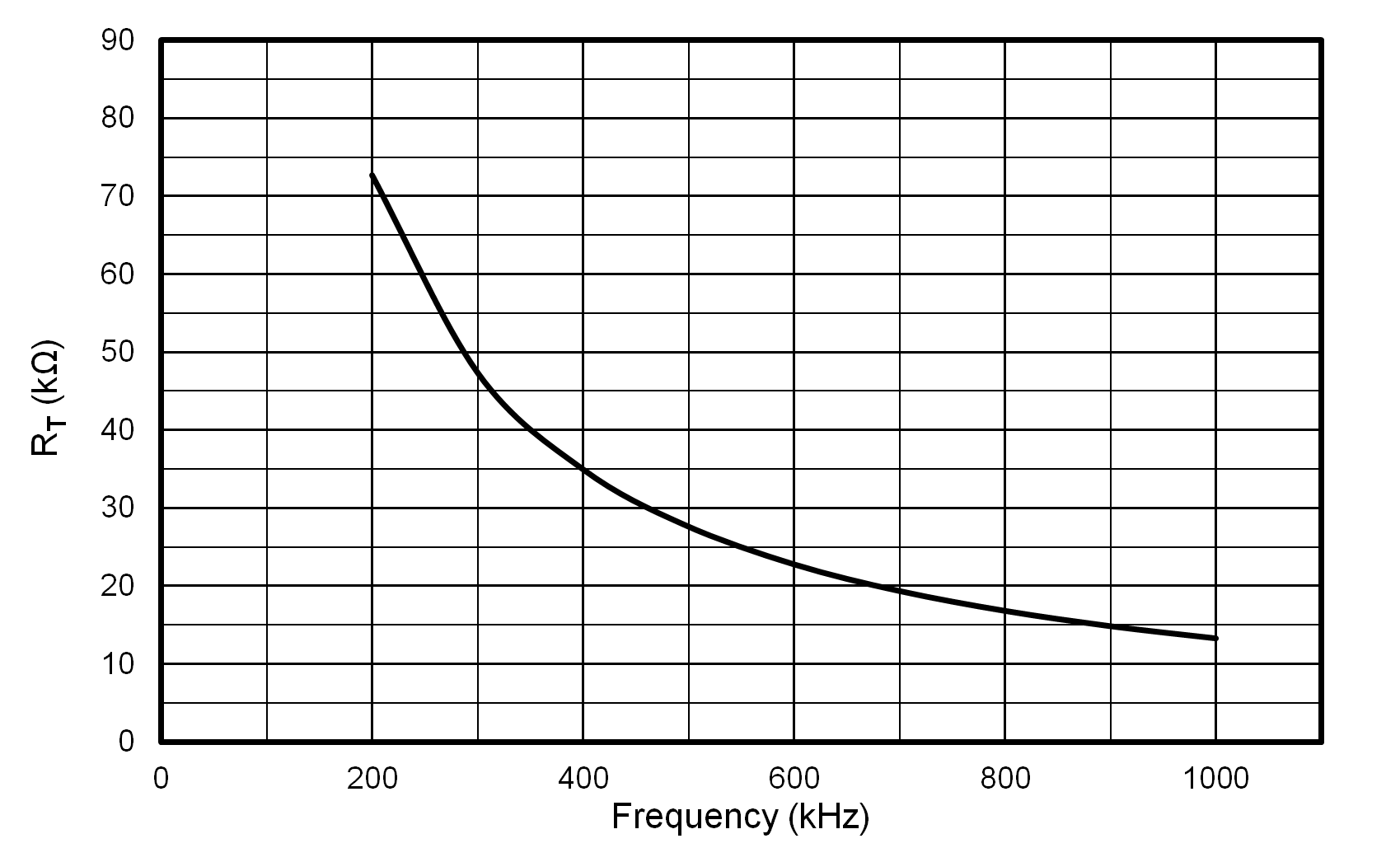SLUSFM2 August 2024 LMR51440-Q1 , LMR51450-Q1
PRODUCTION DATA
- 1
- 1 Features
- 2 Applications
- 3 Description
- 4 Device Comparison Table
- 5 Pin Configuration and Functions
- 6 Specifications
-
7 Detailed Description
- 7.1 Overview
- 7.2 Functional Block Diagram
- 7.3
Feature Description
- 7.3.1 Fixed Frequency Peak Current Mode Control
- 7.3.2 Adjustable Output Voltage
- 7.3.3 Enable
- 7.3.4 Switching Frequency
- 7.3.5 Power-Good Flag Output
- 7.3.6 Minimum ON-Time, Minimum OFF-Time, and Frequency Foldback
- 7.3.7 Bootstrap Voltage
- 7.3.8 Overcurrent and Short-Circuit Protection
- 7.3.9 Soft Start
- 7.3.10 Thermal Shutdown
- 7.4 Device Functional Modes
- 8 Application and Implementation
- 9 Device and Documentation Support
- 10Revision History
- 11Mechanical, Packaging, and Orderable Information
Package Options
Mechanical Data (Package|Pins)
- DRR|12
Thermal pad, mechanical data (Package|Pins)
- DRR|12
Orderable Information
7.3.4 Switching Frequency
The switching frequency of the LMR514x0-Q1 can be programmed by the resistor RT from the RT pin and GND pin. The RT pin cannot be left floating or shorted to ground. To determine the timing resistance for a given switching frequency, use Equation 2 or the curve in Figure 7-4. Table 7-1 gives typical RT values for a given fSW.
Equation 2.
 Figure 7-4 RT Versus Frequency Curve
Figure 7-4 RT Versus Frequency CurveTable 7-1 Typical Frequency Setting RT Resistance
| fSW (kHz) | RT (kΩ) |
|---|---|
| 200 | 71.5 |
| 400 | 34.8 |
440 | Open or pull up to voltage >1.0 V |
500 | 27.4 |
| 750 | 18.0 |
| 1000 | 13.3 |
1000 | Short to GND |